Lava, the molten rock that flows from inside the Earth, can destroy everything in its path. Water, meanwhile is like an arch nemesis of lava. So what happens when the two meet?
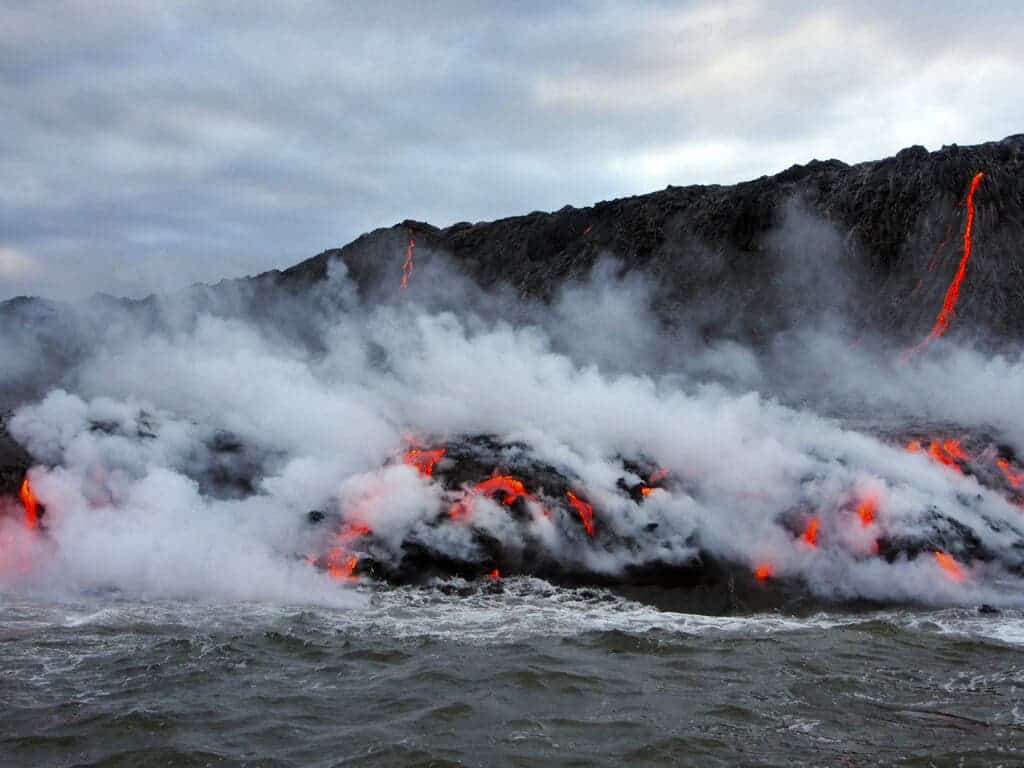
Water and fire
It’s beautiful, sure — but it’s hella dangerous. When lava enters the water, a number of things happen. It’s a very dangerous environment and you should always stay very clear of such a phenomenon — if you do happen to witness such an event, be sure to witness it from very, very far away.
For starters, the lava turns the water scalding hot, and the water swells and can spew very hot drops of water. But that’s just the start of it. If the waves of near-boiling water don’t scare you, they can also be accompanied by steam plumes and rain of hydrochloric acid and small glass particles. If you’re still not afraid, this will probably do the job: the entire lava delta can (and often does) collapse with little notice.
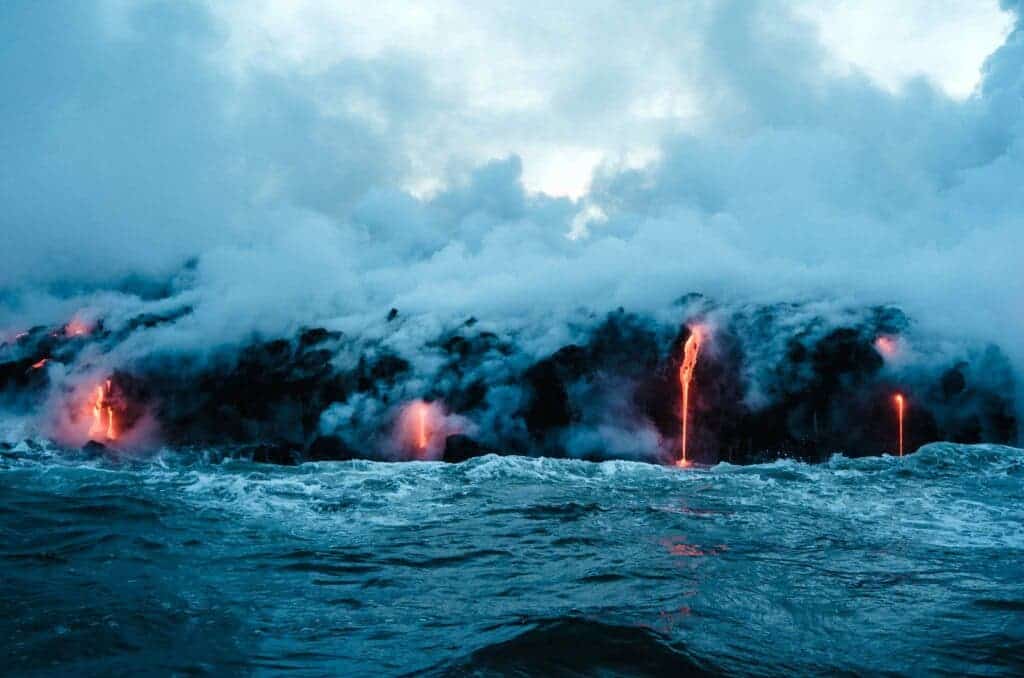
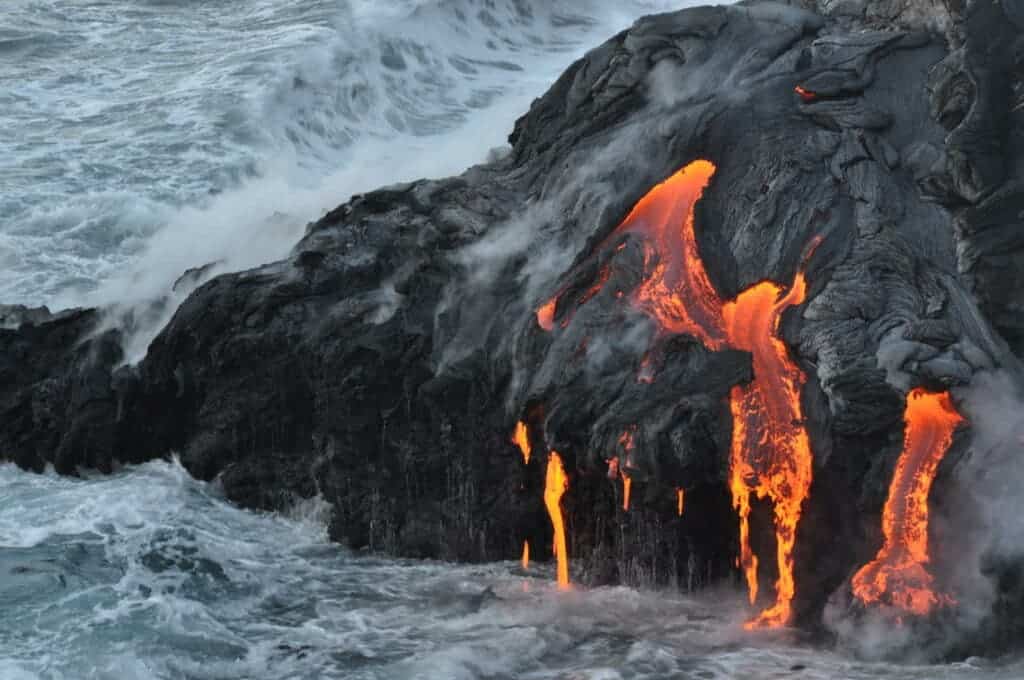
More common than you think
Volcanoes and water seem natural enemies, but they meet more often than you’d think. For starters, there are a lot of submarine volcanoes, but we don’t really get to witness that too often. Perhaps more common is for volcanoes on the cost to erupt and spew their lava all the way to the water.
This is especially relevant for so-called hotspot volcanoes, like the ones that former Hawai’i. Unlike other volcanoes, hotspot volcanoes are directly connected to the mantle. They typically erupt in “calmer” lava flows (again, like in Hawai’i), which has a chance of ending up in water.
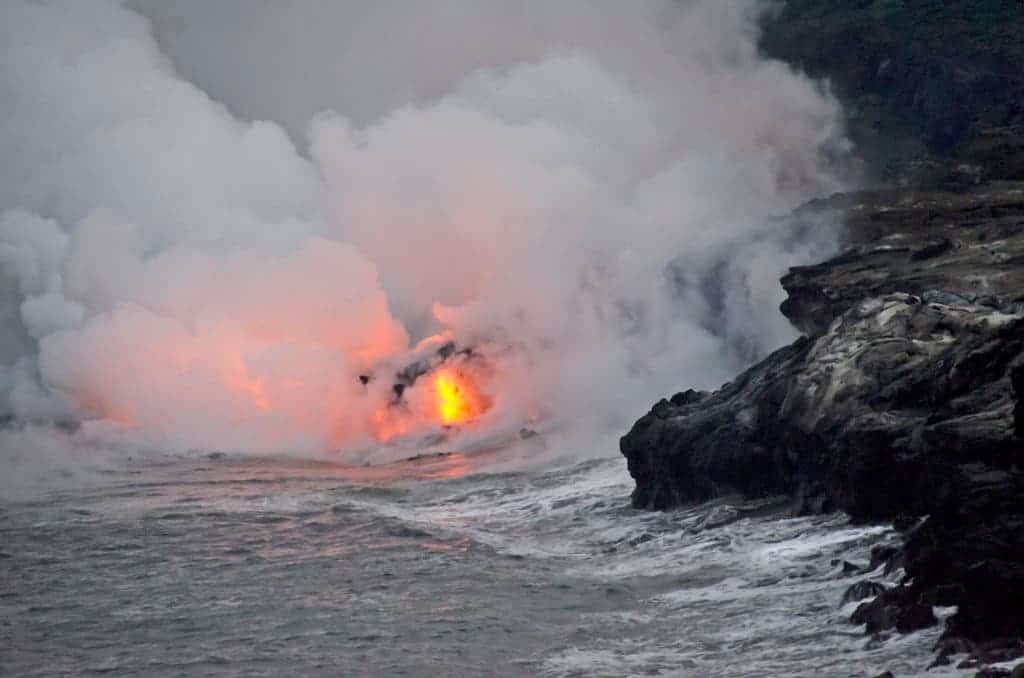

So what happens when lava meets water?
It’s not so much the water itself that does things to the lava, but rather its temperature. Lava flows at extremely hot temperatures of up to 1,170 degrees Celsius (2,140 degrees Fahrenheit), gradually cooling down as it is exposed to the environment. But when it meets water, it’s forced to cool down quickly.
The lava immediately blows away some of the water, mixing with it and creating the toxic fume and droplets. As the lava cools down, it solidifies — but it doesn’t form very solid rocks. Igneous rocks that cool down slowly (in geologic time) can form large crystals, but when lava cools down quickly, it doesn’t have time to form crystals, so you just end up with a sort of black rock riddled with pieces of glass.
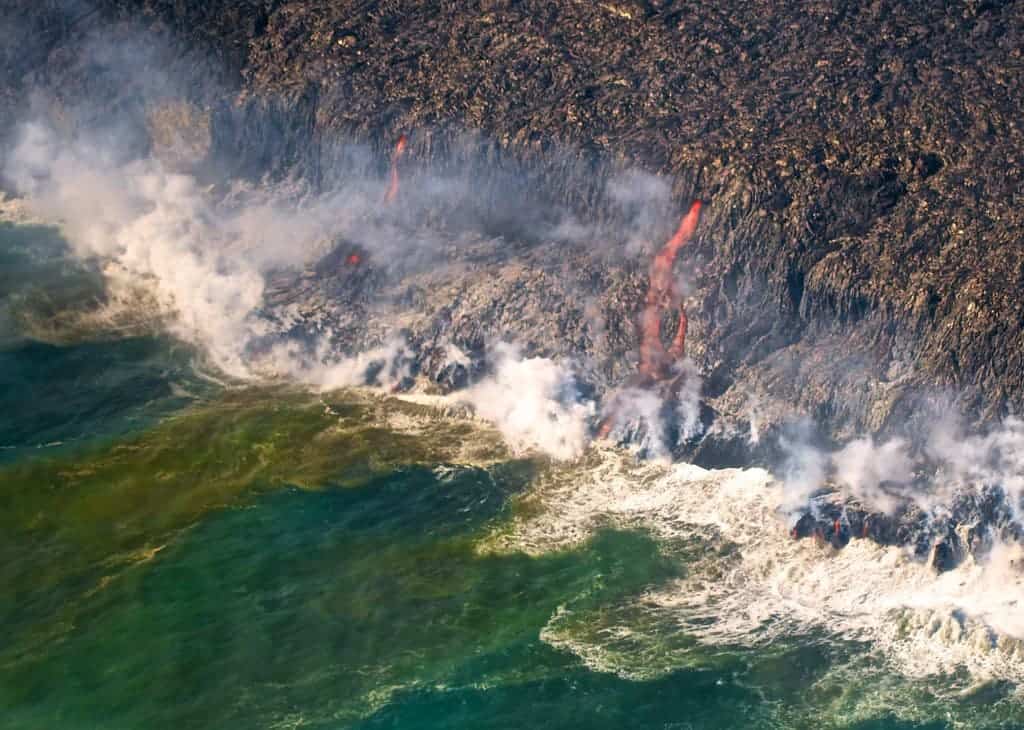
If you’re not sold on how awesome this phenomenon is, here are a few videos that could help change your mind.
All images of lava versus ocean in CC BY 3.0









